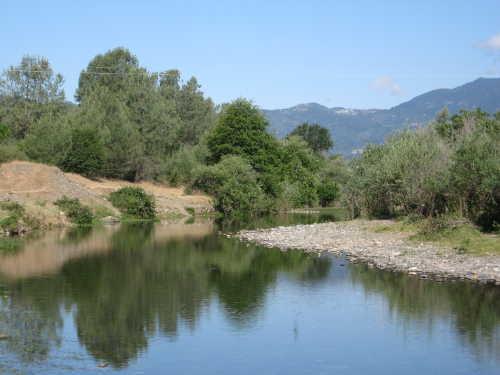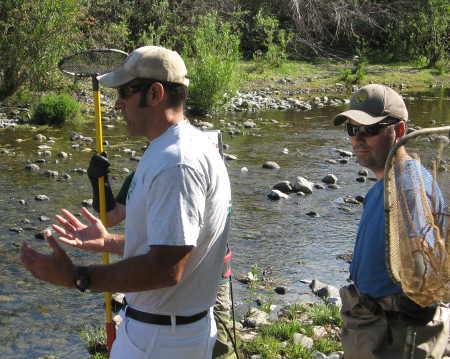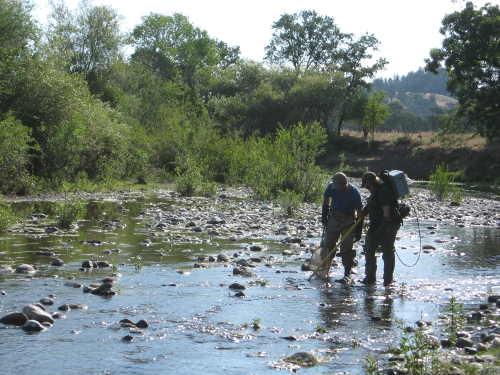
“Well, take me back down, cool water flows, yeah
Let me remember things I love
Stoppin' at the log where catfish bite
Walkin' along the river road at night
Barefoot girls dancin' in the moonlight”
– from “Green River” by John Fogerty, Creedence Clearwater Revival
LAKE COUNTY, Calif. – We have an assortment of creeks coiling throughout our watershed here in Lake County.
Putah Creek is one of Lake County's key creeks, winding down from its headwaters in the Mayacamas Mountains to the Yolo Bypass tributary.
The source of this creek is attributed to springs which are located on Cobb Mountain's east side. Here, you can see native alder and willow trees, shading the lovely, cool pools which are ideal for trout.
This waterway flows through three counties: Lake, Napa and Solano.
Putah Creek's name has been the source of conjecture over the years. The Lake Miwok Indians called it puta wuwwe, or “grassy creek.”
Other accounts, such as documents from Mission San Francisco Solano, or Sonoma Mission hold that the Indians of this area were named Putto or Puttato. In 1844 the creek was named Arroyo de lost Putos.
After several similar names were ascribed to the creek over time, the current version of the name Putah Creek stuck. This was due to the Bancroft maps, and adopted by the United States Geological Survey.
Our streams and waterways are in demand more than ever, with the ongoing drought.
Conditions like these can be detrimental to a creek's diversity, and there is a potential for a decline in native aquatic organisms – including valuable fish.
Here is where our dedicated Department of Fish and Wildlife biologists play a key role in assessing the health of our waterways.
I had the good fortune to meet one such state biologist, and his two assistants, Juan Torres and Lanette Richardson at the recent East Lake Conservation District's “Field Day in the Creek” on Putah Creek, recently.
Ben Ewing is a district fisheries biologist for the California Department of Fish and Wildlife.

I asked Ewing what his essential job entailed. He replied, “I assess the fisheries in Lake, Amador, Alpine and Calaveras counties. To assess the fisheries we will use various sampling methods such as backpack and boat electrofishers, seines, traps, etc.”
For small creeks Ewing said they use a backpack shocker, and for lakes that they can launch a boat in, we will use a boat.
“We try and do the surveys as often as needed, but there are a lot of waters in my district and it is very difficult to get to all of them,” He said. “We will also sample fisheries by doing creel surveys in which anglers are asked how their fishing was.”
Ewing said the information gained helps the agency make management decisions on these waters. He does write ups on waters he has surveyed, and the information can be looked at for others to determine the “quality of the fishery.”
He's responsible for private stocking permits, which entails assessing people’s property to see if they are able to plant certain fish on their property, and for the state trout plants in the four counties where he works.
Ewing routinely give talks and presentations to the public at schools, town hall meetings, sporting shows and fishing clubs to answer questions they have about fisheries.
“A lot of backpacking and field work is involved with this job and I spend a lot of time in the field, which is great,” he said.
Putah Creek has a local claim to fame aspect today. According to a Rolling Stone Magazine article, singer John Fogerty, formerly of the band Creedence Clearwater Revival named the song, “Green River” after our own Putah Creek.
The creek has a tendency to “green up” at times due to vascular plants and algae, and Fogerty frequented Putah Creek near the town of Winters during his youth.
“I can hear the bullfrog callin' me how
Wonder if my rope's still hangin' to the tree
Love to kick my feet 'way down the shallow water
Shoe fly, dragonfly, get back 't your mother
Pick up a flat rock, skip it across Green River
Well!”
– from “Green River” by John Fogerty, Creedence Clearwater Revival
Kathleen Scavone, M.A., is an educator, potter, writer and author of “Anderson Marsh State Historic Park: A Walking History, Prehistory, Flora, and Fauna Tour of a California State Park” and “Native Americans of Lake County.” She also writes for NASA and JPL as one of their “Solar System Ambassadors.” She was selected “Lake County Teacher of the Year, 1998-99” by the Lake County Office of Education, and chosen as one of 10 state finalists the same year by the California Department of Education.


 How to resolve AdBlock issue?
How to resolve AdBlock issue? 



